AMD Ryzen Pro Boss Talks ‘Phenomenal’ Lenovo Partnership, H-Series Expansion
The head of AMD’s commercial client business talks to CRN about what’s new in the Ryzen Pro 6000 CPUs coming out this year, AMD’s ‘phenomenal’ partnership with Lenovo on the new ThinkPad Z laptops and why Ryzen Pro is expanding to H-series models for mobile workstations.

Matthew Unangst Teases AMD’s New Ryzen Pro 6000 CPUs
The head of AMD’s Ryzen Pro business said the chipmaker’s partnership with Lenovo on the new ThinkPad Z laptops represents an unprecedented level of collaboration with an OEM for the chipmaker, and he’s hoping more design wins like it will follow.
“I think, frankly speaking, we’ve learned a lot in that process with Lenovo. It’s been an outstanding collaboration experience and their partnership has been phenomenal,” said Matthew Unangst, senior director of AMD’s commercial client and workstation business, in a recent interview with CRN.
[Related: AMD’s 5 Biggest Announcements At CES 2022]
Lenovo announced the new ThinkPad Z13 and Z16 at CES 2022 in January, and both laptops are among the first that will use AMD’s Ryzen Pro 6000 CPUs and Microsoft’s Pluton security processor. What’s more, the ThinkPad Z13 uses a custom AMD processor, the Ryzen 7 Pro 6860Z.
Unangst said AMD and Lenovo spent a lot of time making sure the new laptops were optimized first and foremost for collaboration experiences, which are key in the new era of hybrid work environments. He called it the “most ultimate solution we’ve ever brought to market on that side of things.”
“This has been a long-term collaboration between us and Lenovo,” he said. “And frankly, we’ve gone through every single aspect of that platform together to make sure that every piece of it is optimized to deliver the best platform in the world.”
While AMD plans to make an official launch announcement for the new Ryzen Pro 6000 CPUs in the next few months, Unangst talked to CRN about what partners can expect from the new processors, which will come with enterprise-level features for security, remote management and reliability.
“That Zen 3+ core, that RDNA 2 graphics and that new adaptive power management system, that’s going to allow us to continue to deliver just outstanding performance on real-world applications, which has been a strong suit of ours over the last few generations,” he said.
In his interview with CRN, Unangst talked about what’s new in the Ryzen Pro 6000 CPUs coming out this year, why the lineup has expanded to include H-series models for mobile workstations, how AMD is addressing the lack of a Ryzen 3 in the lineup, the health of the commercial desktop business and how AMD collaborated with Lenovo on the new ThinkPad Z laptops, among other things.
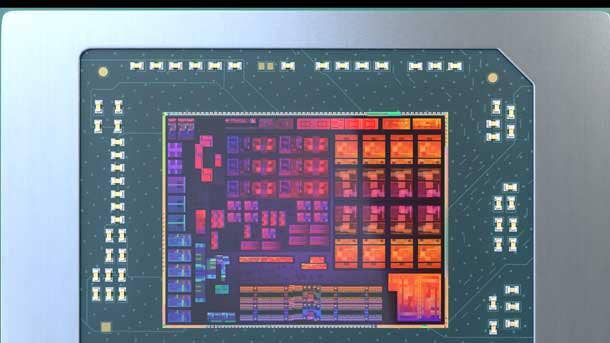
Out of the 200-plus designs announced for the Ryzen 6000 series this year, can you say how many of those are commercial designs with Ryzen Pro CPUs?
I can’t give you a specific number, but what I can say is we’re definitely going to see pretty substantial growth on the commercial side. And that’s inclusive of both our commercial and our workstation lineup as well. And so we’re going to see some healthy growth in the portfolio. We will be doing a separate set of press engagements, specifically around Ryzen Pro a little bit later this spring. And at that point in time, we’ll reveal a little bit more of that detail and can talk through some of those more specifically.
What’s new in the Ryzen Pro 6000 chips this year?
Well, we actually did reveal quite a few things as a part of Ryzen 6000 that are going to be included in our Ryzen Pro 6000 lineup of products. Starting with just Ryzen 6000 in general and things that will extend very, very tangibly into the Pro space: That Zen 3+ core, that RDNA 2 graphics and that new adaptive power management system, that’s going to allow us to continue to deliver just outstanding performance on real-world applications, which has been a strong suit of ours over the last few generations. We’re going to continue to be very, very strong there.
And frankly, I think we’re going to continue to be the leader in battery life on platforms in the industry. We’ve really architected this Ryzen 6000 product and the Pro products by extension to be very adaptive to the application, the use case that a user is experiencing at any given time so we can really put the full force of performance on a workload, whether it’s [Microsoft] Office or Teams or whatever, but also really deliver best-in-class power efficiency and battery life under those workloads as well.
A couple other things: We will absolutely continue to drive innovation and introduce new capabilities and features around our AMD Pro technologies. I think one of the things that you saw in the announcement with Ryzen 6000 in general was the introduction of this Pluton security chip [from Microsoft] that’s integrated into our chip. That’s a really strong collaboration with Microsoft on a technology that was originally pioneered on the Xbox, and now we’re bringing that into the PC space. Really excited about what that does. And I think if you think about our overall AMD Pro Security solution, which is this multi-layered approach to security, Pluton fills a really valuable place in that, adding yet just another layer of security and in that commercial space and those Pro parts, I think that’s going to be a big value proposition as well.

What are the bigger implications for business users when it comes to the efficiency benefits and the adaptive power features of Ryzen Pro 6000 processors?
So there’s a couple of key things to highlight there. The first I would say is, we’ve taken, I believe, a preferred approach around how we’ve architected our cores but also the [system-on-chip] as a whole. We have our Zen 3+ cores, which deliver that great performance but also the best power efficiency, so you don’t have the complexity of the different core architectures within the same chip. So everything we have, it plugs right into the existing ecosystem around OS and applications and all that. So it’s a much simpler approach. I think end users are going to find that it works extremely seamlessly.
Specifically to the efficiency piece, there’s a number of innovations that go into it. We actually have 50-plus new features and innovations that have been driven into our Ryzen 6000 products around power efficiency and battery life. But really, they fall into a few categories. One is with the Zen 3+ core, we made some enhancements specifically to the core to be more efficient. Also, at an SoC level, we’ve implemented this adaptive power management algorithm basically. And so as you think about use cases, applications, you think about Office, you think about what we’re doing right here on Teams or on a Zoom meeting, we’ve looked specifically at those types of applications to really profile how those applications work and make sure that with Ryzen 6000, we are delivering a great user experience, but doing so with the best power efficiency possible.
And so as we look at synthetic benchmarks, yes, we’re going to continue to deliver leadership battery life on those. But what we’re really trying to do is pivot and look at real-world user experiences: that business user that’s running a dozen tabs on Chrome that has Microsoft Office running, they got Outlook and they’re doing a Team meeting with a dozen people on it. Those types of user experiences are going to see a very significant improvement in battery life. And so I think it really is exciting from the standpoint of: We’re not just chasing benchmarks. We’re really going after the real-world user experiences, and we were already in a great position with Ryzen 5000 from a battery life leadership perspective, and with Ryzen 6000 and Ryzen Pro 6000 coming soon, I’m very, very confident that we’re going to continue to extend that leadership position.
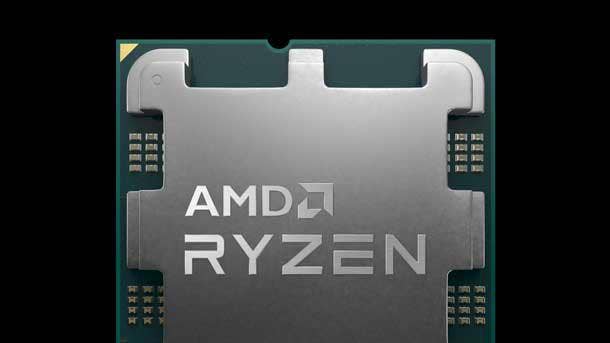
Can you talk about the decision-making that went into creating this lineup, including the introduction of the H-series to the Ryzen Pro lineup?
I think there’s a handful of considerations that go into that. First and foremost, as we look across a growing portfolio of products and bringing our products into more and more premium solutions, we want to make sure that we have all of the options to deliver the right performance and the right user experience depending on those platforms. Our U-class of products, those are configurable from 15 watts for traditional notebooks – both in the consumer and commercial notebook space – up to 28 watts. We’ve addressed that entire space with our U-class of products, so it’s very straightforward for our customers and users to be able to take the part and really tune it into the performance level that they want based on any given platform.
As we think about the H-class of products, that is a space that we see an increasingly large number of platforms really going after creators, kind of that mobile workstation space on the consumer side, obviously with gaming as well. There’s just a lot of demand in that space right now, and there’s a lot of new platforms that are coming out to market in that space. The way I think about it is, our U-class of products really fit into that classic, ultra-thin, really good performance, best-in-class battery life experience. Those H-class products are still going to deliver leadership perf-per-watt, but they’re really going to extend the performance into some of those spaces like that mobile workstation creator space where people just want a little bit more capability.
Were you hearing about regarding the need for this more creator-class or workstation-class of laptop?
I think there’s a lot of feedback right now in the industry about wanting to find solutions that meet this changing need of what our PC is supposed to be. So if we take a step back, and we think about this hybrid world we’re in, there are a lot of users that used to have a desktop, and now they need something that’s a little bit more transportable. And so that is one of a number of places where we are seeing demand for these kind of creator boxes that have more of that desktop-capable performance and scalability, but it’s something that can move around. But we still see very, very strong demand in that U-class of products, which, especially in the enterprise space for your classic kind of workhorse enterprise notebook, that’s still where we expect the bulk of that volume to go.
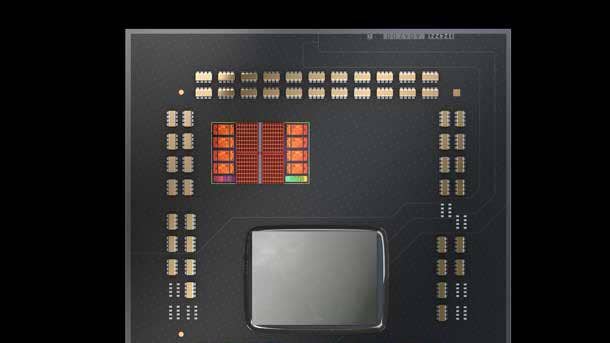
I know that there isn’t a Ryzen 3 in the overall Ryzen 6000 lineup, and I’ve seen some people ask whether AMD is doing enough to service the low end of the market for commercial customers. What is AMD’s assessment on this when it comes to low-end parts for commercial users?
Very good question. I think as we look at the portfolio, it’s important to understand the context of where different products play. So we have our Ryzen 6000 class of products: Ryzen 6000, Ryzen Pro 6000. That is a set of products that is delivering breakthrough innovations, breakthrough capabilities, just pure leadership-class experiences. And generally speaking, we are seeing those drive into new platforms, next-generation platforms that are more in the premium space. And we’ve really tuned our product offerings around what those platforms drive into market.
It by no means is suggesting that we’re walking away or that we don’t take the mainstream or entry part of the market seriously. We have a very strong set of products that are in that space. We work very closely with our OEM partners to make sure that with our Ryzen 5000 class of products, we can address those bases with the right products. And so as we think about the market, it’s really about working with our OEM partners to make sure that as a portfolio, we have the capability to address the whole space. But surely, while we are continuing to push more and more into the premium space, we continue to be very focused on making sure that we maintain our momentum across the entire portfolio and the entire user base.
With the latest generation lacking Ryzen 3, is AMD sourcing parts from older generations to fill the gap for that that lower end?
We still have a number of Ryzen 3 options across the portfolio, and there’s no intent to eliminate that. So with Ryzen 6000, you’re correct: It starts at Ryzen 5 and moves up, but as we look across our Ryzen 5000 class of products, we absolutely have that stack from Ryzen 3 and up.
What is the supply situation is for commercial PC Parts this year? I know you said earlier that AMD is increasing the designs for commercial systems this year, but what is the supply situation and will you be able to increase shipments from where it was last year?
At an industry level, there’s no question: supply, the supply chains, and the macroeconomic conditions, it’s certainly been challenging. And that’s true across all components that we see shipping in these systems. From an AMD perspective, I’m very confident we continue to make strong investments to grow our capability, to grow our supply capabilities specifically. And as we look at our business for 2022 and beyond, I’m very confident that the investments we’re making are going to enable us to continue to grow the business in line with our expectations. So certainly, we’re putting our focus in that space. We continue to work with our industry peers and our industry partners as well to make sure that the other components and the other peripherals that go into systems are also expanding in terms of their capabilities so that we can ensure that the full systems have what they need to ship.
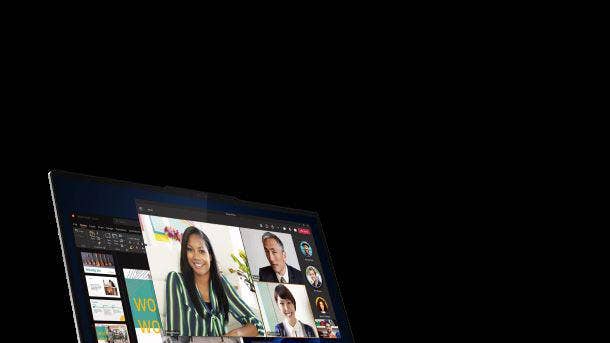
I wanted to talk about the AMD-Lenovo collaboration on the new ThinkPad Z laptops. What did that engagement involve? Has AMD done anything on this scale before?
The short answer is this, I think, represents really the best collaboration effort on a laptop that AMD has ever engaged with an OEM on. And it is something frankly that we are extremely proud of. I think this is just an outstanding platform, and I cannot wait for people to get their hands on it and get a chance to see it in person and use it. It really represents the most ultimate solution we’ve ever brought to market on that side of things. So very, very excited about that. Very proud of it.
In terms of what that collaboration looks like: This has been a long-term collaboration between us and Lenovo. And frankly, we’ve gone through every single aspect of that platform together to make sure that every piece of it is optimized to deliver the best platform in the world. The platform is designed specifically with the intent of being the best-in-class collaboration laptop, so as you think about the audio with Dolby Audio, as you think about the multi-microphone array with sound cancellation, as you think about the multiple FHD camera setup in that communication bar, which is going to enable just a phenomenal camera experience coupled with the OLED displays, everything about it is designed to be optimized for that collaboration experience.
And then what we’ve done on the AMD side is we’ve worked very closely with Lenovo to tune the processor: to ensure that on those use cases, you’re getting the optimal experience; to make sure that we’ve seamlessly integrated capabilities around sound cancellation and the video processing and the codecs there. So we’re really excited about that. I think, frankly speaking, we’ve learned a lot in that process with Lenovo. It’s been an outstanding collaboration experience and their partnership has been phenomenal.
As you mentioned, AMD made a custom processor, the Ryzen 7 Pro 6860Z, for Lenovo’s ThinkPad Z13. What necessitated the creation of this processor?
So as we look at that platform there with that Z13, we wanted to do something for a subset of the volume on that [ThinkPad Z] platform that really represents the absolute best of the best, and that 6860Z processor represents exactly that. It is really the top of the stack solution, uniquely on that platform. And as we looked those use cases around collaboration, that is the product that’s going to deliver the best performance, the best battery life, the best user experience on that platform.
So it’s just a great example of how Lenovo and AMD looked at this platform in a completely different lens than what we had before. And that platform will still offer our standard Ryzen 7 Pro and Ryzen 5 Pro processors. But for those users that want just that absolute best experience, that Ryzen 7 Pro 6860Z represents something pretty special.

Comparing a standard Ryzen 7 Pro part to the 6860Z, what would the differences be?
So we will release more of those specs a little bit later in the spring, and I think that will become a little bit more clear. Really, what we focused on with that Ryzen 7 Z part is making sure that the performance and the battery life specifically in collaboration experiences – video conferencing, as an example – are second to none. And so that’s really how we’ve tailored that part. And it’s very aligned with the intent of the platform overall, which is, it’s an uncompromising collaboration machine.
You described this as an unprecedented collaboration with an OEM. Are you hoping to do more of these engagements with OEMs in the future?
I think as we look at our portfolio as a whole, and as we look at the continued growth into those premium solutions, we are always interested in having conversations with our partners around how we can be the best partner and deliver the best products to market.
And so obviously, I can never share unique details until they become publicly available, but I think this is indicative of the kind of partnership we have on this platform. And that model, that partnership, that is something that we absolutely intend to extend to everybody that we work with in the industry.
Ryzen 6000 has USB 4 but not Thunderbolt 4. I know that, in general, the I/O throughput is pretty much the same, but I’m curious what AMD’s view is of USB 4 versus Thunderbolt 4. Intel has Thunderbolt 4 for its latest processors, and I’ve read that there are some advantages you can get from that. Does having only USB 4 put AMD at any disadvantages in the commercial market?
Candidly, no. So we have USB 4 on Ryzen 6000. It’s fully functional. We have the optional support for things like Thunderbolt 3 compatibility tied to that. As we’ve engaged with our customers, as we’ve looked at the use cases, the peripherals, it’s still a very early technology and at this point in time, we believe very firmly that with USB 4 fully functional, we can deliver on all of the use cases, all the experiences and have support for the right components and peripherals that are in the market. We will always consider all of our options, but at this point in time, [we’re] very confident that USB 4 full functionality will give us what we need.
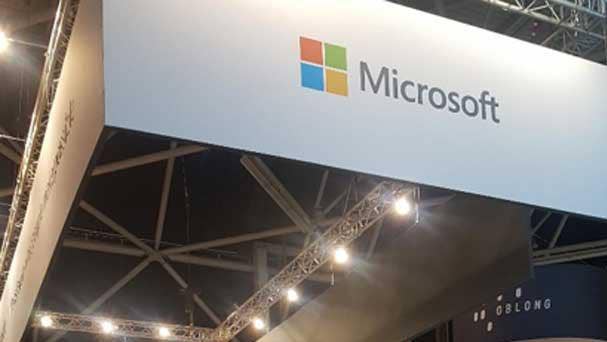
I wanted to ask about the Pluton security processor from Microsoft. While Microsoft has announced partnerships with Intel, AMD and Qualcomm around this, AMD is the first to use this. Is Pluton embedded on the die of the AMD processor?
It’s integrated into the processor, correct.
From a business customer perspective, why would you say this is an important feature to have alongside what the Ryzen processor is offering?
Great question. When we think about security, security is not a point solution. There is no silver bullet to security. Security is about having defense in depth. It’s about having multiple layers of defense to prevent against numerous different types of attacks that are out there. Pluton is a technology that was originally pioneered in the Xbox. That was something we collaborated on in that space of the business, and frankly, it’s been very, very successful. It’s been very effective, and it serves a number of purposes, both internal to the chip and the OS, where the OS is able to use it as a root of trust, if you will, for a number of things.
But at a platform level, as we move into the PC space, there’s an opportunity there for our partners to use it to drive attestation or other capabilities to improve their security around some of their proprietary security solutions. So I think of it as a really, really great advancement or addition to the existing security stack that we have. It represents a pretty significant innovation. Having it integrated is, of course, another level of security as opposed to having some kind of discrete component on the board as well. So very excited about that innovation.
I think it just continues to show that when it comes to things like security, we’re not just resting on our laurels. We continue to push the innovation, and we’re pushing the innovation across the whole ecosystem. We’re working closely with Microsoft. You can imagine to have something like this integrated into the chip has taken a lot of planning and foresight, and we continue to push in those areas around security.
Does this get rid of the need for a Trusted Platform Module in the system?
What I would say is it has the ability to serve as a TPM solution. We’re not going to dictate to our customers whether or not that is a path that they have to take. So it provides that option for customers or platforms that choose to pursue that path.
Lenovo’s new ThinkPad Z laptops have Pluton. Are there any other new AMD systems this year that will have Pluton?
I can’t talk to the specifics, but there will be other platforms that come to market that have Pluton enabled, and I think that will become a little bit more clear over the next few months.
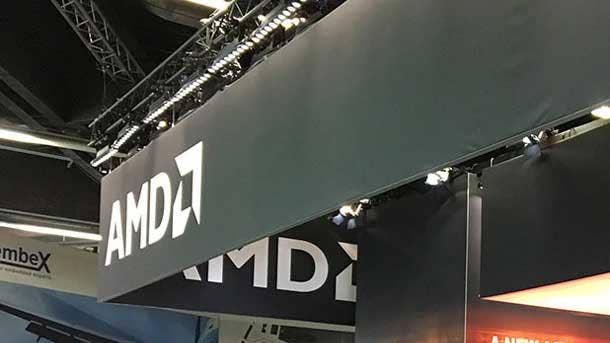
I wanted to briefly talk about the commercial desktop business. I’m curious about what the momentum has been for that. What is AMD doing this year to try to win more designs in that space?
I’ll say it’s a nuanced situation as we see it right now. Obviously, with the onset of the [pandemic] two years ago now, we did see a fairly significant dip in the desktop market. We do see, I’ll say, kind of a renormalization of what the desktop business looks like in the commercial space. So we’ve seen certain markets start to recover while other markets have started to move more into the mobile space, and we talked about how that’s driving the creation of some of these creator platforms and stuff like that.
Today, we have a very strong set of products around our Ryzen Pro 5000 desktop products. We continue to have solid demand, solid sales for those platforms, HP and Lenovo being the leaders on that front. And we’re going to continue to support the commercial desktop market moving into the future.
We do see this interesting bifurcation, where there’s a strong push into entry workstations for people that really want that high-performance desktop, and so we’re actively working on how we respond to that. But as we look at our Ryzen 5000 class of products today, they’re very strong capability, and [we’re] very committed to continuing to support that market moving forward.
At the beginning, did you say that you expected the number of designs to grow this year for desktop?
Well, for commercial overall, absolutely. And most of that growth is coming on the notebook side. We don’t see tons of rapid growth in in the commercial desktop market in general right now. But it certainly does not mean that there’s not really good business opportunity there with the portfolio that we have.
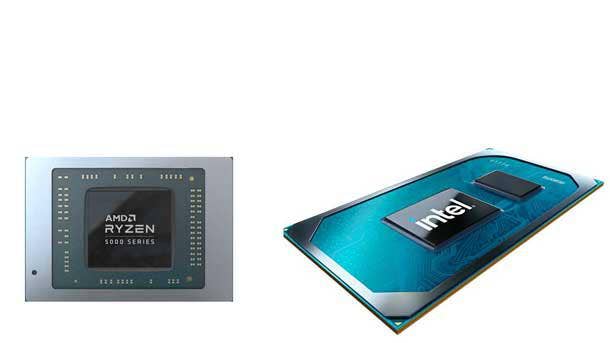
Intel announced that it’s expanding its vPro platform to cover small- to medium-sized businesses with some but not all of the vPro features that enterprise customers have access to, which will include some basic PC management. I’m curious what your take on that is, because I know that for AMD, Ryzen Pro is made for more of the enterprise side of customers and for SMBs, you mostly point to the regular Ryzen processors. Is that still the right approach for AMD? And do you think that Intel is going the right direction with providing more features to SMB-type customers?
What I’ll say first and foremost is with our Ryzen Pro solution, I think at that enterprise level, I am extremely confident that we have a very compelling offering there as we think about our security, manageability and the pieces that come with our Pro products around stability and reliability. So very, very confident in the capabilities of that enterprise solution.
We continuously have discussions with our partners, and in the SMB space, we talk about what is the right set of solutions to play into that market. I think SMB customers, they do care about things like security. And we’re working with our partners to ensure that when those customers on those platforms want the right security solutions, that we’re finding a way to deliver that. In terms of whether or not we want to proliferate the branding and the different variants, we will always evaluate what’s the right thing to do there. But as I look at our business right now, I look at the growth trajectory we’re on. I think, with our Ryzen Pro products, we have the products and the solutions needed for the enterprise and for the SMB customers that we’re working with. And as things change, we’ll always reevaluate.
Are there any new things that AMD is doing from a business perspective to encourage more adoption of Ryzen Pro systems, whether that’s new sales and marketing initiatives, things like that?
What I’d start with saying is demand for our products right now is extremely strong. We continue to see strong growth in the demand for our Ryzen and Ryzen Pro products in the commercial space. And as we see that demand grow, we continue to make investments on the product side to ensure that we’re continuing to deliver leadership product. I think that more than anything drives the desire and the demand for the product.
But tied to that, we continue to make incremental investments in key sales and go-to-market areas as well. And I think the thing that’s more important than anything is that we’re not doing that on our own on an island. We’re driving these discussions and these engagements in partnership with the OEMs. And so ThinkPad Z is a perfect example of that. We have just this phenomenal platform we brought to market, and now we’re working very closely with them to make sure that there’s a strong pipeline for demand and interest in that product. That may be the most visible opportunity, but certainly as we think about our other partners, with HP and others, we’re embracing that model as well.